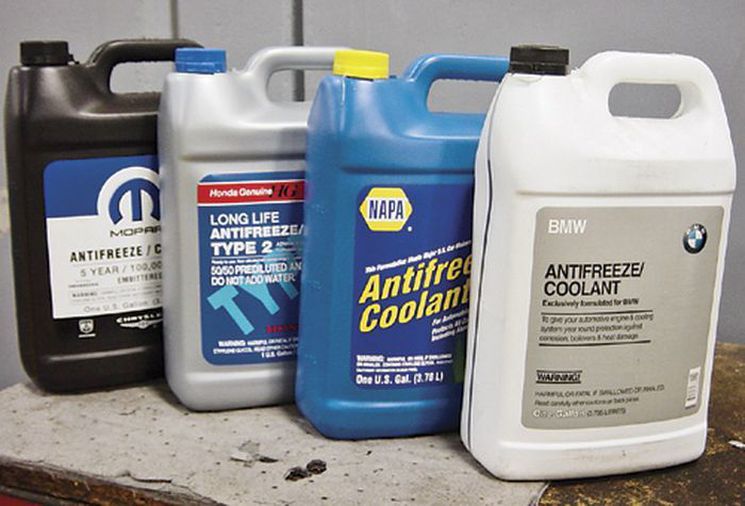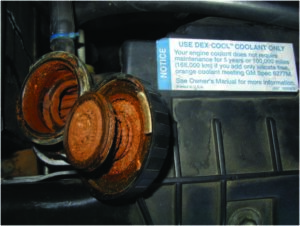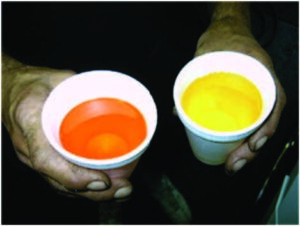Antifreeze, something we all know our vehicles need, but something we rarely check. The role of antifreeze is important to the everyday running of our vehicles. In this edition of Tech Talk, we will go over the chemicals that make up Antifreeze, what type to use, how to check the strength of it, and when to change it.
Ever wonder what comprises antifreeze? It is a pretty simple mixture with an Ethyl Glycol base, water, dye, and various chemicals to treat and prevent corrosion within the cooling system. The Ethyl Glycol is used due to its low freezing point, which prevents your vehicles engine block from cracking when water freezes. The dye is commonly used to aid in leak detection, which means it is not a reliable way of identifying the coolant type. The various chemicals are the differentiator in antifreeze types.
The type of antifreeze to use depends on the vehicle make, and what the manufacturer specifies, refer to your owner’s manual for guidance. There are commonly three types of Antifreeze: Conventional Green, Dexcool (OAT), and a new Hybrid OAT (known as HOAT). Conventional Green usually contains an inorganic corrosion inhibitor and a buffer to neutralize pH. Dexcool, used commonly in GM vehicles since 1996 and several other makes and models, uses an organic acid technology to prevent corrosion by forming a thin molecular coating. If not serviced, it can form a red slime coating within the cooling system (See picture). The third type of antifreeze is known as HOAT. HOAT is compatible with all types of antifreeze, and uses the best features of Conventional and Dexcool. HOAT is fast reacting to pH changes and has long life, but will form a coating of slime if not serviced like Dexcool.
Result of Dexcool not being serviced
There are several ways to check the concentration of your antifreeze. The most accurate and recommended way is with a refractometer, a digital tool. Other ways are the less accurate Bulb type, or test strips, which are geared more towards heavy duty diesel coolant analysis. The graph below shows the concentration and the temperatures they provide.
Antifreeze %Water Protection Against Freezing *Protection Against Boil-Over
30 70 1 degrees F 249 degrees F
40 60 -9 degrees F 258 degrees F
50 50 -34 degrees F 264 degrees F
60 40 -61 degrees F 269 degrees F
70 30 -83 degrees F 276 degrees F
New Organic-Based Orange Antifreeze (Dexcool/HOAT) VS traditional Yellow or Green Antifreeze
When to change your coolant depends on the type and temperatures your vehicle experiences. Conventional Green is suggested to be changed every 24,000 miles or 2 years. For Dexcool and HOAT, it is suggested every 150,000 miles or 5 years. The reasons are due to the fact that the antifreeze loses its ability to prevent corrosion and picks up contaminants from the engine. 50/50 is the suggested ratio, however extremely cold and hot places will need a higher antifreeze concentration to prevent freezing and boiling.



